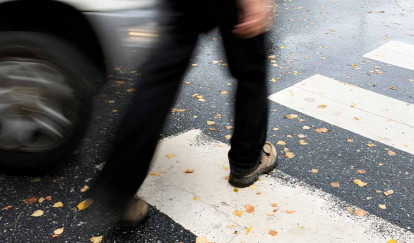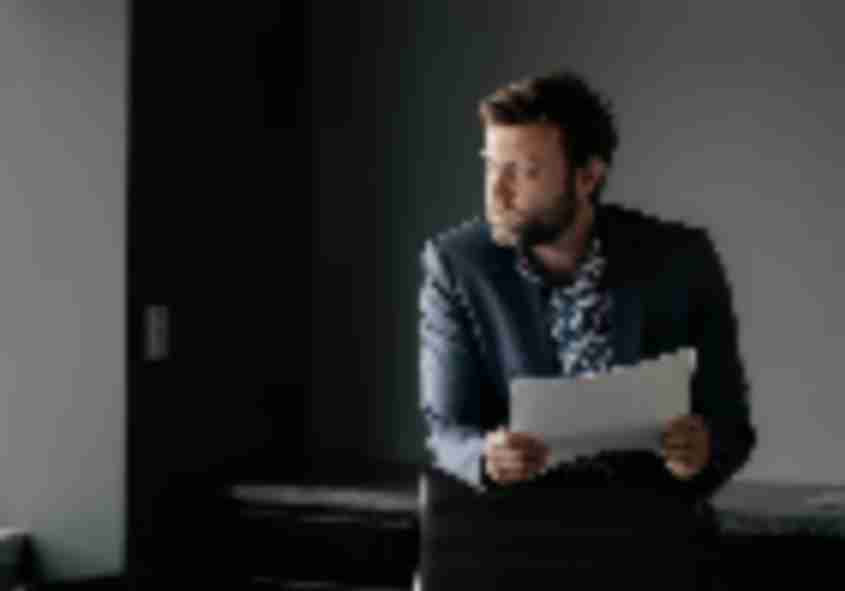
Share This Article
It is a common misconception that pedestrians always have the right of way and that drivers are always at fault when they hit someone walking - But that is not the case!
Being defensive as a driver is as important as being defensive as a pedestrian. If you are hurt in a pedestrian accident in Virginia, you should speak with a Commonwealth Law Group pedestrian lawyer. Our legal team will clearly explain all Virginia pedestrian laws while informing you of your options and rights.
If you have any questions regarding the duties of pedestrians in Virginia, contact us today for a free, no-obligation consultation.
The Pedestrian Laws of Virginia
A pedestrian is "a person who is walking, especially in an area where vehicles go", according to the Cambridge Dictionary.
A pedestrian might also use an electric scooter, a skateboard, or roller skates. In some instances, cyclists may also be referred to as pedestrians. However, they are expected to make way for pedestrians when necessary.
In general, anyone not operating a car, truck, motorcycle, or any other motor vehicle is considered a pedestrian.
According to Virginia law, drivers must yield to pedestrians at all crosswalks when driving in Virginia, whether or not they are marked, and pedestrians must use crosswalks when they are present.
Additionally, according to Virginia pedestrian crossing laws, pedestrians cannot obstruct traffic or engage in risky behavior like darting in front of moving vehicles.
The state has implemented Virginia pedestrian laws to protect pedestrians as they traverse across Virginia. All parties are expected to obey these rules to ensure the safety of all road users. Accidents may occur and result in injuries and deaths when this fails.
Pedestrian laws can be categorized by the locations where pedestrians may be present. ..
On Sidewalks
Pedestrians on sidewalks in Virginia have the right of way. However, these laws do not apply when an accident occurs due to a pedestrian walking on a damaged lane.
Below are the general pedestrian sidewalk laws that Virginia follows:
- According to state law, whenever sidewalks are present, people crossing the street must use them.
- If there are no sidewalks, people should cross the street facing traffic and proceed to the far left edge of the road. People can best see oncoming traffic when they walk in this direction.
- If a car stops at a crosswalk for people to cross, cars cannot pass that car.
- Cars must yield to pedestrians who are crossing a sidewalk.
At Marked Crosswalks
The law requires pedestrians to cross streets at crosswalks — if they are present. Below are the specific pedestrian crosswalk laws in Virginia:
- Pedestrians have the right of way in marked crosswalks. The state uses traffic control devices such as traffic signals and indicators to mark crosswalks, while other crosswalks have police officers designated to control traffic. Cars must stop or slow down for pedestrians regardless of where they are in the crosswalk. A person is in the crosswalk soon after stepping off the curb.
- A pedestrian cannot cross the street outside of a crosswalk if they are between two signaled intersections.
- Pedestrians at crosswalks with pedestrian signals must pay attention to the "Walk" and "Don't Walk" signs, just as drivers must pay attention to red or green lights.
- Pedestrians have the right of way over all vehicles, including those turning right on red. The driver must give pedestrians sufficient time to cross if they proceed when the "Walk" signal is on.
- Pedestrians must yield to vehicles whenever there isn't an intersection or a marked crosswalk.
On Roadways and Highways
Only when there are no sidewalks should pedestrians use highways. However, they must use the left side of the road, with their backs to oncoming traffic.
Contributory Negligence: Determining Fault
Virginia has a strict policy regarding sharing blame in pedestrian accidents. The policy makes it much more difficult for pedestrians injured in a collision with a car driver to receive compensation for their injuries.
In some states, the parties can “share” blame, and plaintiffs can recover up to the percentage that the other party was at fault even if they themselves were negligent. This is not the case in Virginia.
Virginia follows the contributory negligence system when assigning blame for pedestrian accidents. Under Virginia law, accident victims are not eligible for compensation if they were even 1% at fault for the event. Drivers often use this as a defense when a pedestrian is hurt in an accident.
Whether a pedestrian who is injured in an accident will be able to recover is often determined by whether they had the right of way.
Right of Way
Pedestrians' right of way is limited in Virginia. The law ensures that they are protected and adhere to specific rules when there are crosswalks and sidewalks. Here are the specific guidelines for pedestrian right-of-way laws in Virginia:
For Pedestrians
According to Virginia law, pedestrians must stay out of the way of oncoming traffic. They should be alert and cautious when crossing intersections and shouldn't do so without keeping an eye out for vehicles traveling in the opposite direction.
Additionally, Virginia law does not permit pedestrians to cross a street that is open to traffic but where they cannot be seen. Suppose a driver cannot see you when crossing the street in an unmarked area, and you get hit. The right of way lies with the driver in such a case. However, the law also requires drivers to maintain a reasonable speed and keep a proper lookout to mitigate the risk of causing accidents.
For Motor Vehicle Drivers
Drivers must yield to pedestrians at any crosswalk, whether in the middle of the block or at the end. Drivers must also stop entirely for all pedestrians using marked and unmarked crosswalks until they are out of the way. Pedestrians have the right-of-way at crosswalks, but they must also abide by the "Walk" and "Don't Walk" signals.
Virginia pedestrian laws indicate that motorists entering, crossing, or turning at intersections should only change their course, slow down, or stop, as necessary, to provide for pedestrians' safe and prompt passage through such intersections. At intersections, vehicles turning onto the highway that pedestrians are crossing always have the right of way.
Talk to a Virginia Pedestrian Law Attorney Today
Injured pedestrians in Virginia should speak with experienced personal injury attorneys at Commonwealth Law Group as soon as possible to protect their legal rights. Our attorneys know how to get you fair compensation if you were injured in a pedestrian accident in Virginia.
We have a group of investigators who can thoroughly and immediately examine your incident to determine who was at fault. Contact us today to discuss the specifics of your pedestrian accident case during your free consultation.
If you have been injured at work or through the negligence of another individual or entity, contact us at (804) 999-9999 or or use the form below to connect with our legal team. We will fight to get you the justice you deserve.
